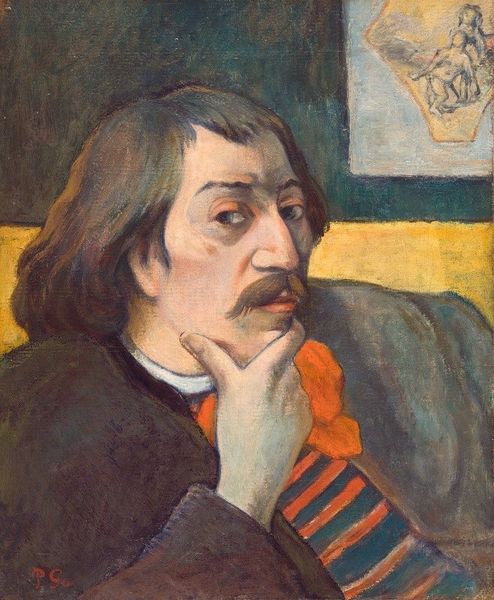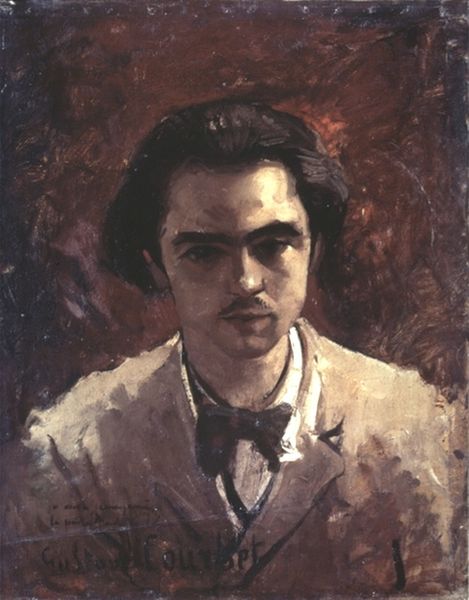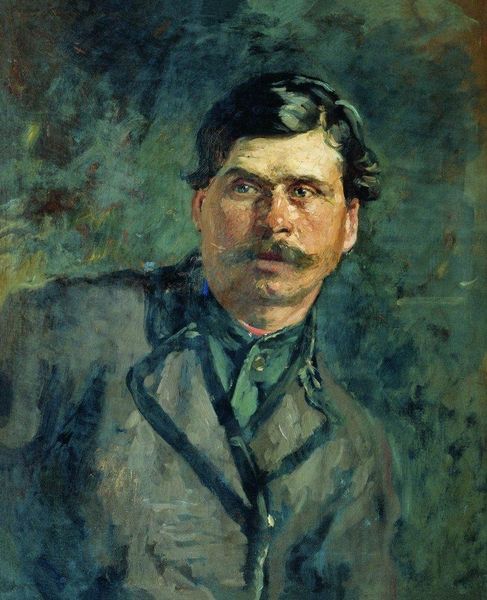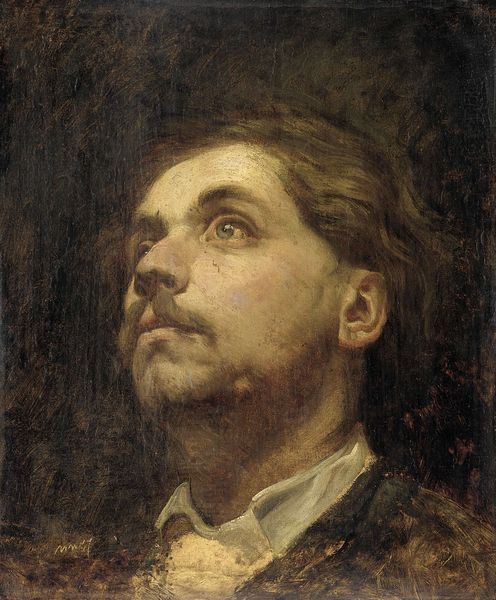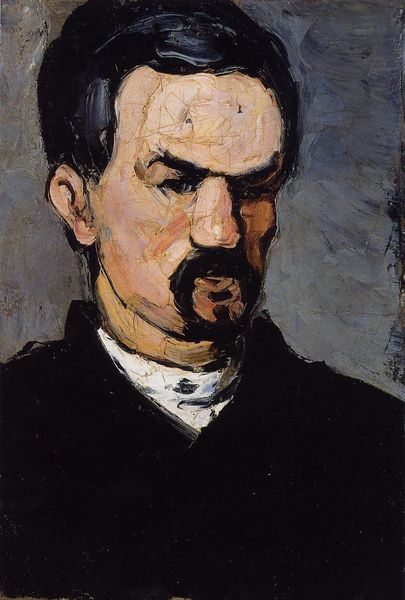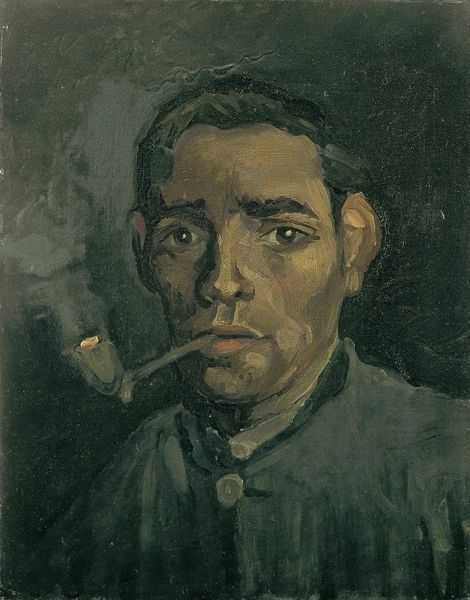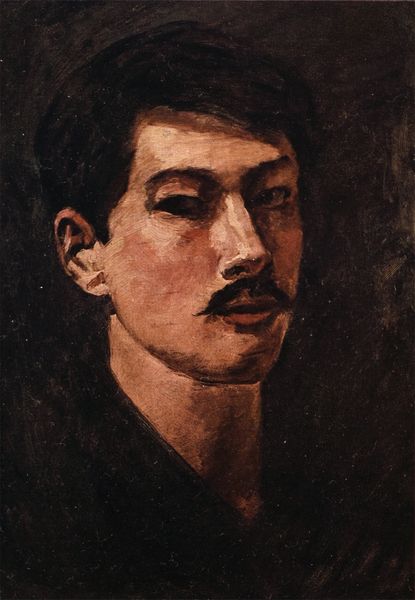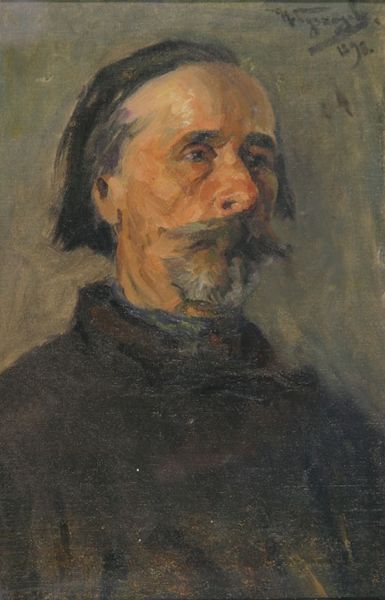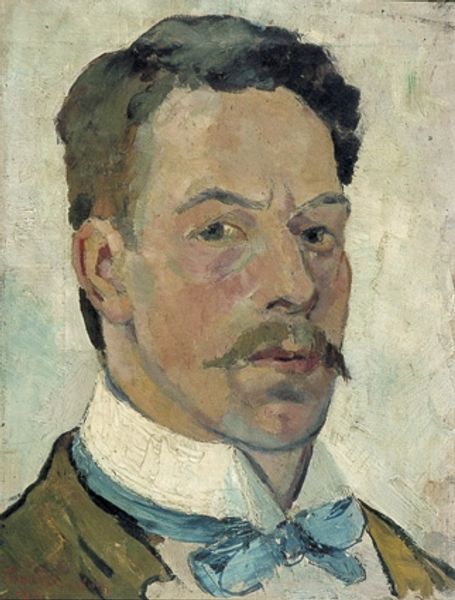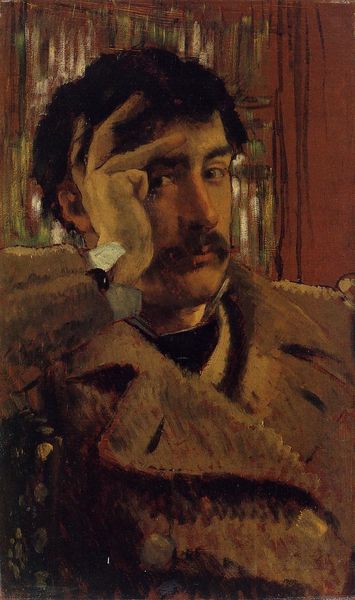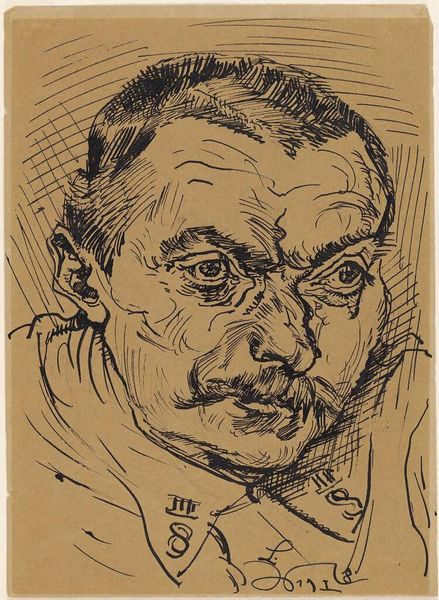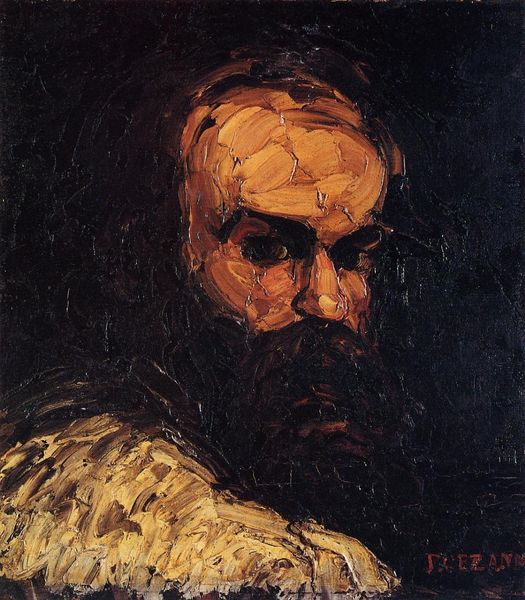
painting, impasto
#
portrait
#
head
#
portrait image
#
painting
#
impasto
#
portrait reference
#
famous-people
#
male-portraits
#
portrait head and shoulder
#
symbolism
#
animal drawing portrait
#
russian-avant-garde
#
portrait drawing
#
facial portrait
#
forehead
#
portrait art
#
fine art portrait
#
realism
#
celebrity portrait
#
digital portrait
Copyright: Public domain
Curator: This is Mikhail Nesterov's "Portrait of Maxim Gorky," painted in 1901. Gorky, the celebrated writer and political activist, is depicted here with a striking intensity. Editor: He looks troubled. The muted color palette and that direct gaze give a real sense of unease and deep thought. What kind of painting material has the artist used? Curator: Nesterov employed oil paints in an impasto technique, adding a tangible, textural quality to the work, especially evident in the rendering of Gorky's features. But let's consider the cultural context. This portrait emerges from the Russian avant-garde, a period of significant social upheaval. Gorky, a figure known for his socialist realism, became a literary sensation championing the working class, but even among his supporters there were tensions and fractures concerning ideology and means. Editor: So, even the seemingly simple act of rendering someone like Gorky becomes laden with meaning regarding the social position and class identity. I'm thinking of how the thickness of the paint and the deliberate strokes articulate Gorky’s physical presence and hints at manual labor - it becomes as much about the materials and how they're applied as the likeness itself. Was it difficult for Nesterov to get these supplies, and does that process affect the overall statement? Curator: Indeed. The rough, almost sculptural application of paint serves to not only depict Gorky, but also allude to the rough existence of the people Gorky wrote about. The social and political dimensions are inseparable. Think about the Symbolist movement and its deep influence on Russian art, encouraging artists like Nesterov to find deeper truths within the human condition, which, here, are tightly bound to class struggle. Editor: And Nesterov clearly had a solid technique! It’s the intersection of this painterly skill with this politically conscious portrayal. Gorky wasn't merely a man; he was a symbol of change, and the way he is depicted reflects that. How did it contribute to creating this image? Curator: Precisely. The portrait transcends individual likeness, transforming Gorky into an embodiment of early 20th-century revolutionary spirit in Russia. The materiality echoes and reinforces this representation. Editor: Seeing the way these artistic and social concerns meet here really opens up how we engage with the artwork. Curator: It shows how deeply entangled art and politics truly were in the dawn of a century of rapid change and struggle for human dignity.
Comments
No comments
Be the first to comment and join the conversation on the ultimate creative platform.
